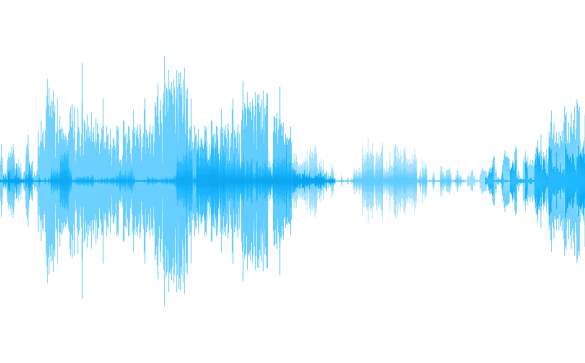Citizens outperform AI after only one hour of training

Credit: The authors
It is not yet possible to predict earthquakes, but the analysis of different types of seismic data allows scientists to pinpoint where and when each type of earthquake originated, and hence better understand when and where tectonic slip might occur via damaging earthquakes. Tens of thousands of seismic stations around the world continuously record local seismic activity, with an output that is far beyond what scientists can process. Here, researchers from Northwestern University have called over 2,000 citizen scientists to the rescue for the crowd-based analysis of seismic recordings, rendered into audiovisual format, through the program Earthquake Detective on the Open-Science platform Zooniverse. They show that citizens are at least as accurate as machine learning, and can even identify tectonic tremors, which previously was only possible for trained professionals. The results are published today in Frontiers in Earth Science.
“My aim was to receive help with detections of these special seismic events because I felt overwhelmed by the rapidly growing mountain of data I was investigating for my PhD research,” says lead author Vivian Tang, a graduate student at the Department of Earth and Planetary Sciences of Northwestern University, Illlinois. “With Zooniverse and the Earthquake Detective team, we provide people everywhere with a simple and engaging way to help further scientific research.”
After completing a tutorial and practice session, each citizen scientist was asked to listen to a random selection from among 2,467 recordings captured by seismic stations across Alaska, part of the USArray of stations across North America. Visual traces were shown alongside the audio data. Each recording corresponded to the first 2,000 seconds (but sped up 800 times to audible frequencies) after the estimated arrival at each station of the surface waves from one of 30 known major earthquakes that occurred somewhere in the world between between 2013 and 2018. When the wave from a faraway earthquake reaches a seismically active location such as Alaska, where the Pacific tectonic plate slides under the North American, it may trigger local seismic events, such as smaller earthquakes or tectonic tremors, which are series of thousands of slow, tiny vibrations deep inside the Earth’s crust that may last for days or weeks. Tremors were first discovered in 2001 and have since become an important focus of study, because they show us where tectonic slip occurs without earthquakes, yet are thought to play a role in the origin of earthquakes.
Each recording was presented to ten different citizens, who had to classify it as an earthquake, tremor, background noise, or none of the above. Sped up, the seismic recordings of earthquakes typically sound like a slamming door, while tremor sounds like a train going over railway tracks, and background noise can sound like whistling wind, crinkling tin foil, or radio static. The researchers used the number of citizens agreeing on each classification as a measure of the degree of consensus. A selection of the dataset was also classified by trained seismologists among the authors, while output from a machine learning algorithm developed specifically by them to identify earthquakes were used as a benchmark for the citizens’ performance. Artificial intelligence has not yet been able to identify tectonic tremor, which until the present study where citizens successfully mastered this task, could only be recognized within seismic data by seismologists.
The citizens reached a collective decision for 91% of the tested recordings. There was more consensus when classifying earthquakes (74% of recordings with this collective decision reached the preset threshold of 40% votes for the majority classification) than for tremor (51%) and background noise (66%). When their collective decision was compared to the correct classification, as determined by the professional scientists, the citizens were collectively 85% accurate in identifying earthquakes, higher than the 76% accuracy of the machine learning algorithm.
The authors conclude that citizen scientists can make a major contribution to seismology, allowing scientists to process much more data than they ever could on their own, thus helping them to better understand processes deep inside the Earth’s crust and forecast earthquakes with greater precision. The citizens’ ability to collectively identify tremors, which artificial intelligence can’t yet do, will be especially valuable for the field.
“Earthquake Detective can be a resource for other researchers in this field who are interested in receiving input from an impressive group of volunteer scientists. We strongly encourage these researchers to point us to seismograms they would like to see classified, so that we can include them in Earthquake Detective, and return the volunteer classifications to the researchers,” says Tang.
###
Media Contact
Mischa Dijkstra
[email protected]
Related Journal Article
http://dx.




